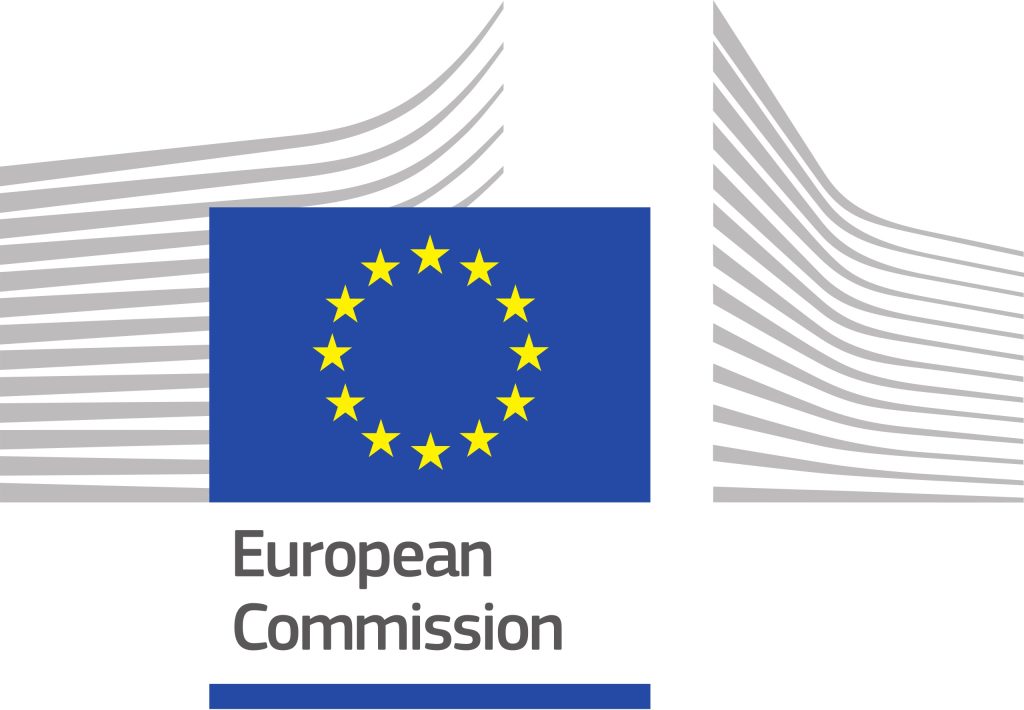
Development of non-fluorinated components for fuel cells and electrolysers
Expected Outcome:
Green hydrogen is routinely cited as a major pillar of the clean energy transition by the European Commission, where fuel cell and electrolyser technologies are expected to play an important role in achieving Europe's emissions reduction targets. Proton exchange membrane (PEM)-based fuel cells (PEMFCs) and electrolysers (PEMELs) are currently among the most mature technologies, dominating both current capacity and expected near-term growth. Currently, all PEM-based hydrogen technologies rely on perfluorinated sulfonic acid (PFSA)-based ionomers combined with a membrane reinforcement made from expanded polytetrafluorethylene (ePTFE) and contain polytetrafluoroethylene (PTFE) in other functional layers such as the gas diffusion layer (GDL). These fluoropolymer PFSA and ePTFE components have exceptional chemical stability and durability, as well as high ionic conductivity and favourable wetting properties for optimal water balance. Together, these properties enable high performance PEMFC/PEMEL operation over extended lifetimes.
However, there is growing concern that per and polyfluorinated substances (PFASs) present health and environmental hazards as their production, degradation, and disposal can result in the release of perfluorinated compounds that accumulate in the environment. As a result, possible future European regulation of the use of PFAS compounds is under discussion.
The development of non-fluorinated proton exchange membranes with the same KPIs as fluorinated membranes (considering performance, durability, efficiency, and economic viability) but with lower environmental impact will be instrumental for the development of the hydrogen industry.
The development of non-toxic, safe-by-design, fluorine-free materials for the use in fuel cell and electrolyser technologies is, therefore, essential to ensure that renewable green hydrogen technologies remain environmentally friendly solutions. The development of stable, high-performance, non-fluorinated components has also the potential to produce innovative solutions that can provide advantages in cost-reduction, performance, and stability over the incumbent fluorinated materials which are exclusively used in today's hydrogen technologies. Furthermore, new approaches provide the opportunity to tailor material properties to the exact requirements to the component. This will contribute to the aim of the Clean Hydrogen JU to accelerate the development and deployment of the European value chain for safe and sustainable clean hydrogen technologies.
Project results are expected to contribute to all of the following expected outcomes:
- The development of new non-fluorinated materials, e.g., proton exchange membrane, reinforcement, and catalyst layer ionomer, paving the path to fluorine-free PEM fuel cells and/or electrolysers;
- Ensuring that these new materials are free of the hazardous properties that currently characterise PFASs and that the risks for contamination are significantly reduced i.e., regrettable substitution need to be avoided;
- A breakthrough in performance and durability of fluorine-free PEM fuel cell and electrolyser technologies;
- Demonstration of full-scale PEMFC and/or PEMEL stacks which are free from fluorinated components by 2030;
- Contribute to the development of safe and sustainable clean hydrogen technologies in line with the European Green Deal;
- Contribute to the goals of the Chemicals Strategy for Sustainability, an important part of the EU’s zero pollution ambition and a key commitment of the European Green Deal.
- Find new materials with a view to improve overall system and value chain sustainability (including durability) and environmental footprints
The project results are expected to contribute to the following objectives and KPIs of the Clean Hydrogen JU SRIA:
- Ensure circularity by design for materials and for production processes, minimising the life-cycle environmental footprint of electrolysers and fuel cells;
- Reducing the use of critical (raw) materials with sustainability or environmental concerns, such as for instance those deriving from poly/perfluoroalkyls.
The project should make good progress towards the 2030 performance and durability targets for PEMFC and/or PEMEL technologies. For PEMFCs this corresponds to a power density >1.5 W/cm2 @ 0.650 V and a degradation rate < 5 µV/hr. For PEMEL this corresponds to an operating current density of 3.0 A/cm2 at a cell voltage of 1.8 V and a degradation rate< 5 µV/hr.
Scope:
The scope of this topic is limited to proton exchange membrane (PEM-based) fuel cells (PEMFCs) and/or electrolysers (PEMELs) because other hydrogen fuel cell and electrolyser technologies, e.g., high temperature solid oxide or proton conducting ceramics, and low temperature anion exchange membrane technologies typically do not incorporate PFAS in their materials components.
More specifically, the proposed project should focus on the development of non-fluorinated ionomers, both membrane and catalyst layer ionomer, as well as non-fluorinated membrane reinforcement materials to replace ePTFE-based membrane reinforcements.
Proposals should address the following:
- The development of non-fluorinated ionomers for membranes and catalyst layers with low resistance, low H2 permeability, high thermal and chemical stability, as well as, for membranes, high mechanical stability in both wet and dry states;
- The development of non-fluorinated membrane reinforcement technologies to enhance the mechanical strength and reduce the dimensional swelling of fluorine-free membranes;
- Studies investigating the use of non-fluorinated ionomers in the catalyst layer, including the optimisation of catalyst ink composition and subsequent catalyst layer deposition;
- Validation of single cells/short stacks in PEMFC and/or PEMEL (minimum cell size of 25 cm2) employing appropriate performance and durability protocols.
- Lifecycle and environmental impact assessment comparing the novel non-fluorinated components developed within the project with the existing fluorinated components to demonstrate the sustainability of the proposed solutions.
- Techno-economic analysis of the new non-fluorinated components to identify potential advantages in capital and/or operational expenditures is also considered within the scope of this topic.
Projects should build synergies with current projects that include the development on non-fluorinated fuel cell and electrolyser components, e.g., SUSTAINCELL and HIGHLANDER. Collaboration between academic institutes, research organisations, and industry partners are expected to address the scope of the topic in a suitable manner. The consortium should consist of at least one partner with the capability to produce membranes and/or catalyst-coated membranes (CCMs) at industrially relevant scales to ensure that the developed technologies are compatible with high-volume manufacturing technologies. This will ensure rapid market uptake and technology transfer following the conclusion of the project. The developed components should be demonstrated in a single cell PEM fuel cell and/or electrolysis cell. The minimum cell size for demonstration should be 25 cm2 and testing in a short stack of up to five cells could also be considered.
For activities developing test protocols and procedures for the performance and durability assessment of electrolysers and fuel cell components proposals should foresee a collaboration mechanism with JRC (see section 2.2.4.3 "Collaboration with JRC"), in order to support EU-wide harmonisation. Test activities should adopt the already published EU harmonised testing protocols to benchmark performance and quantify progress at programme level.
Proposals are expected to contribute towards the activities of Mission Innovation 2.0 - Clean Hydrogen Mission. Cooperation with entities from Clean Hydrogen Mission member countries, which are neither EU Member States nor Horizon Europe Associated countries, is encouraged (see section 2.2.6.7 International Cooperation).
For additional elements applicable to all topics please refer to section 2.2.3.2.
Activities are expected to start at TRL 2 and achieve TRL 4 by the end of the project - see General Annex B.
The JU estimates that an EU contribution of maximum EUR 3.00 million would allow these outcomes to be addressed appropriately.
The conditions related to this topic are provided in the chapter 2.2.3.2 of the Clean Hydrogen JU 2024 Annual Work Plan and in the General Annexes to the Horizon Europe Work Programme 2023–2024 which apply mutatis mutandis.
Specific Topic Conditions:
Activities are expected to start at TRL 2 and achieve TRL 4 by the end of the project - See General Annex B.
General Information
Green hydrogen is routinely cited as a major pillar of the clean energy transition by the European Commission, where fuel cell and electrolyser technologies are expected to play an important role in achieving Europe's emissions reduction targets. Proton exchange membrane (PEM)-based fuel cells (PEMFCs) and electrolysers (PEMELs) are currently among the most mature technologies, dominating both current capacity and expected near-term growth. Currently, all PEM-based hydrogen technologies rely on perfluorinated sulfonic acid (PFSA)-based ionomers combined with a membrane reinforcement made from expanded polytetrafluorethylene (ePTFE) and contain polytetrafluoroethylene (PTFE) in other functional layers such as the gas diffusion layer (GDL). These fluoropolymer PFSA and ePTFE components have exceptional chemical stability and durability, as well as high ionic conductivity and favourable wetting properties for optimal water balance. Together, these properties enable high performance PEMFC/PEMEL operation over extended lifetimes.
However, there is growing concern that per and polyfluorinated substances (PFASs) present health and environmental hazards as their production, degradation, and disposal can result in the release of perfluorinated compounds that accumulate in the environment. As a result, possible future European regulation of the use of PFAS compounds is under discussion.
The development of non-fluorinated proton exchange membranes with the same KPIs as fluorinated membranes (considering performance, durability, efficiency, and economic viability) but with lower environmental impact will be instrumental for the development of the hydrogen industry.
The development of non-toxic, safe-by-design, fluorine-free materials for the use in fuel cell and electrolyser technologies is, therefore, essential to ensure that renewable green hydrogen technologies remain environmentally friendly solutions. The development of stable, high-performance, non-fluorinated components has also the potential to produce innovative solutions that can provide advantages in cost-reduction, performance, and stability over the incumbent fluorinated materials which are exclusively used in today's hydrogen technologies. Furthermore, new approaches provide the opportunity to tailor material properties to the exact requirements to the component. This will contribute to the aim of the Clean Hydrogen JU to accelerate the development and deployment of the European value chain for safe and sustainable clean hydrogen technologies.
Project results are expected to contribute to all of the following expected outcomes:
- The development of new non-fluorinated materials, e.g., proton exchange membrane, reinforcement, and catalyst layer ionomer, paving the path to fluorine-free PEM fuel cells and/or electrolysers;
- Ensuring that these new materials are free of the hazardous properties that currently characterise PFASs and that the risks for contamination are significantly reduced i.e., regrettable substitution need to be avoided;
- A breakthrough in performance and durability of fluorine-free PEM fuel cell and electrolyser technologies;
- Demonstration of full-scale PEMFC and/or PEMEL stacks which are free from fluorinated components by 2030;
- Contribute to the development of safe and sustainable clean hydrogen technologies in line with the European Green Deal;
- Contribute to the goals of the Chemicals Strategy for Sustainability, an important part of the EU’s zero pollution ambition and a key commitment of the European Green Deal.
- Find new materials with a view to improve overall system and value chain sustainability (including durability) and environmental footprints
The project results are expected to contribute to the following objectives and KPIs of the Clean Hydrogen JU SRIA:
- Ensure circularity by design for materials and for production processes, minimising the life-cycle environmental footprint of electrolysers and fuel cells;
- Reducing the use of critical (raw) materials with sustainability or environmental concerns, such as for instance those deriving from poly/perfluoroalkyls.
The project should make good progress towards the 2030 performance and durability targets for PEMFC and/or PEMEL technologies. For PEMFCs this corresponds to a power density >1.5 W/cm2 @ 0.650 V and a degradation rate < 5 µV/hr. For PEMEL this corresponds to an operating current density of 3.0 A/cm2 at a cell voltage of 1.8 V and a degradation rate < 5 µV/hr.






Development of non-fluorinated components for fuel cells and electrolysers 0 reviews
Login to Write Your ReviewThere are no reviews yet.